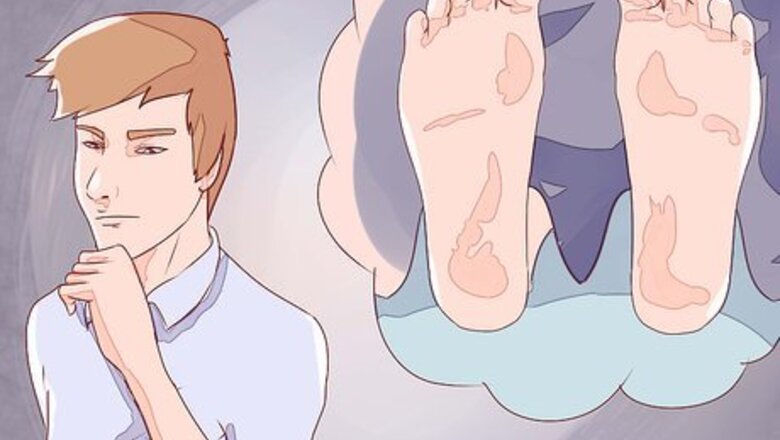
views
Understanding Reflexology
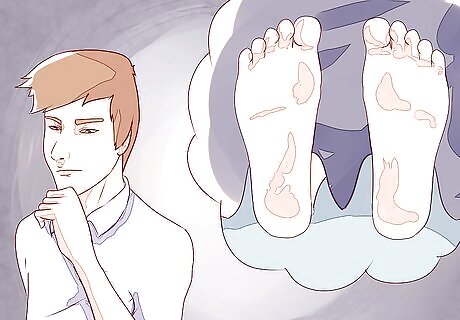
Learn the fundamentals of reflexology. Reflexology is based on the premise that the nerves in your feet, hands and ears each correspond with other parts of your body. Applying pressure to certain reflex areas can relieve symptoms in other parts of the body. Engaging a nerve in your big toe, for example, could reduce tension in your head and relieve a headache. Applying pressure to your heel could aid in digestion. Reflexology has even been used to aid in treatment for serious conditions like cancer, diabetes and heart disease. Research has shown that reflexology has four primary effects: It can impact specific organs, such as by increasing blood flow to the kidneys. It can bring about an amelioration of specific symptoms by helping organs function properly. It can create a relaxation effect and reduce anxiety. It can relieve pain throughout the body.
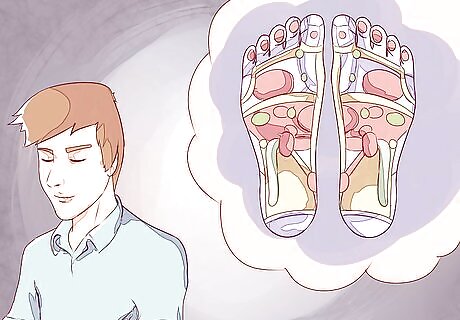
Understand reflexology zones. Reflexology is based on the idea that the body can be divided into zones. Picture your body divided into a system of longitudinal and transverse zones. Imagine five zones on each side of your body, starting at the tip of each toe, and running up the length of your body to the top of your head. The transverse zones (similar to lines of latitude) divide the areas of your feet into zones that correspond to your head and neck, your chest, abdomen and your pelvis area. Engaging the tip of a particular zone by applying pressure to a place on the foot activates the body's healing power for that entire zone. This concept is also referred to as zone therapy. When you perform reflexology, it's necessary to learn where the reflexes are on the feet that correspond to every limb, organ and gland of your body. When you apply pressure to these specific points, you stimulate the corresponding limb, organ or gland. In this way you can use reflexology to stimulate your body's healing power. When your body is experiencing stress, your energy reserves get depleted and you are less able to fight infections or combat pain. But when your body is in a deeply relaxed state induced by reflexology, your body’s natural healing power is activated.
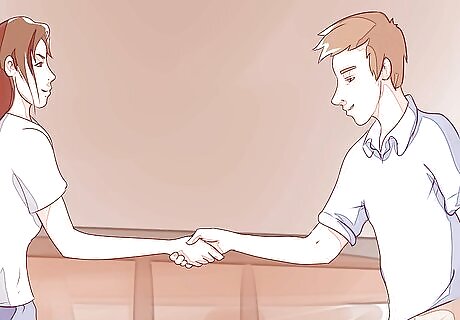
Consider making an appointment with a reflexologist. Meeting with a person who has been certified in the art of reflexology is a good way to introduce yourself to the practice. He or she will be able to show you the finger "walking" techniques used to apply pressure to specific points on the hands, feet and ears to relieve stress and pain in other parts of the body. Before making an appointment, be sure to check the person's credentials and verify that he or she is a certified reflexologist. Some natural health practitioners practice reflexology without having studied the art in depth. If you're interested in becoming a reflexologist, consult the website of the American Reflexology Certification Board to find a list of programs that offer certification in reflexology.
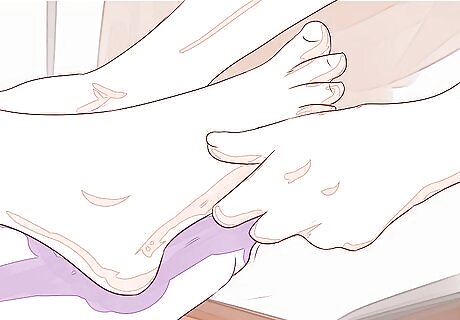
Practice applying pressure to reflex points. When you identify which zone you want to engage, find the correct reflex spots on your foot by looking on a chart or consulting with a reflexologist. Apply gentle pressure to the area. The pressure you apply to these spots will stimulate your body to create endorphins that interrupt the pain cycle and relieve stress. Reflexology feels similar to getting a foot massage. The pressure you apply should feel firm, but not painful. Use your fingers and thumbs to gently work the area for several minutes. To prepare yourself for a reflexology session, simply try to relax. Reflexology is often considered a holistic healing practice, but there's no special mental preparation you have to go through to make it effective.
Relieving Stress

Get in a comfortable position. Remove your shoes and socks and sit cross-legged on a bed or a yoga mat. Try to relax your body in an effort to prepare yourself to begin the healing process. You may either perform your own reflexology treatment or work with a partner who can apply pressure in the spots that are more difficult to reach.
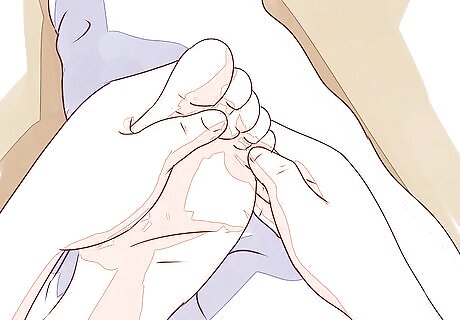
Relieve tension in your neck and head. Relieve neck tension by applying pressure to the joints or "necks" of your 8 little toes. If you are experiencing tension in one area of your neck, you will feel tension or a slight discomfort in one of your corresponding toes. Your entire head is represented in your two big toes, so apply pressure to them to relieve headache tension. Use your fingers to apply steady, firm pressure to the backs of your toes, one at a time. Continue until you feel the tension in your neck begin to dissolve and the pressure leave your head.
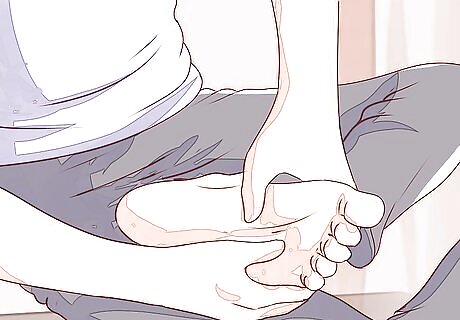
Help your chest relax. Stress often manifests in the form of a chest that feels tight. You may feel like you're having trouble taking a good, deep breath. Apply pressure to the balls of your feet to alleviate chest discomfort. This area contains the reflexes to your lungs, airways, heart, thymus gland, chest and shoulders.
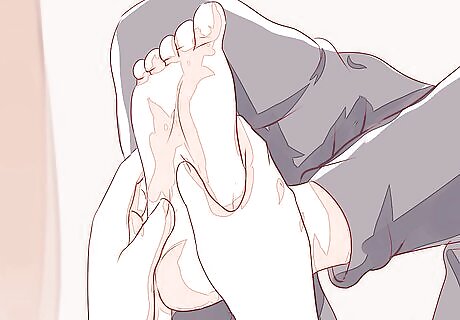
Relieve stomach tension. If you tend to feel stress in your stomach, which many might describe as having "the jitters," press the reflex points on your instep (the non-weight bearing area on the bottom of your foot) to relieve discomfort to your abdominal organs. This is the area you would want to work on if you are feeling "gut-wrenching" emotions, or if you wake up with a feeling of heaviness in the pit of your stomach.
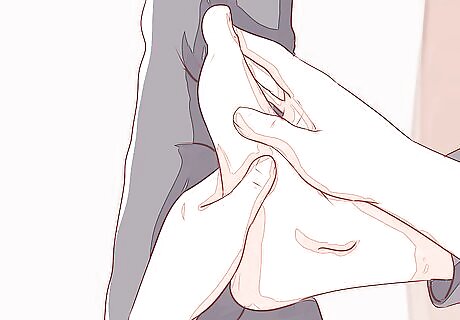
Loosen your limbs. If your legs, arms and shoulders feel tight with stress, use reflexology to loosen up. Discharge tension in your arms and legs by applying pressure to the reflex points on the outer edges of your feet.
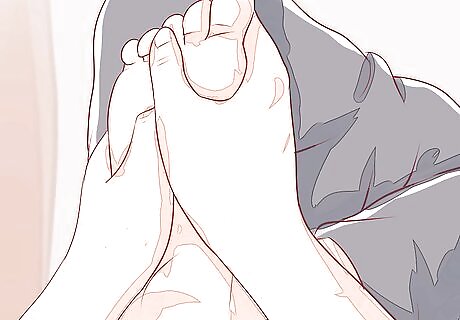
Help yourself sleep. Try applying pressure to a combination of all of the reflex points to relieve insomnia. Stress is often the main cause behind insomnia, and if worries, fears and tension tend to keep you up at night, you can relieve your insomnia using the same reflex points you would use to relieve tension and stress: Apply pressure to the backs of your toes to ease pressure in your neck and head. Apply pressure to the balls of your feet to help you breathe more easily. Apply pressure to your instep to help your stomach calm down. Apply pressure to the outer edges of your feet to loosen tight muscles.
Relieving Pain

Have a partner help you. When you're dealing with pain, it can be helpful to work with a partner rather than performing reflexology techniques on your own. That way you can try to completely relax your body to allow healing to begin. Remove constricting clothing and lie down on a bed or another comfortable surface before beginning the session. Dim the lights to create a more peaceful environment with as few irritating stimulants as possible. It can help to play soothing music, light some candles, or use massage oil to make the experience feel as calming and healing as possible.
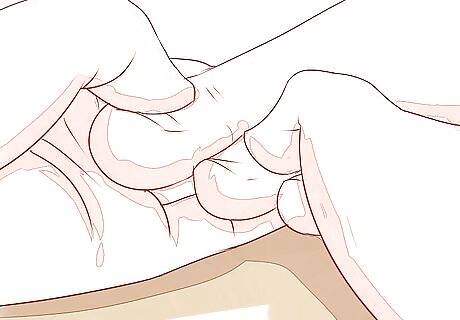
Get rid of a headache. Reflexology is great for relieving simple headaches and neck tension. Relieve tension and sinus headaches by applying pressure on the reflex points for the head and neck, which are located on your toes. All of your toes have points that correlate to your head, face and brain. Apply pressure to the entire surface of each of your toes if you are suffering from a migraine headache. Press your thumb into each toe and repeat the process at least ten times for each toe. This method is especially effective if your migraine has been triggered by sinusitis. If you have chronic or unexplained head pain, seek medical advice to find out if your headaches are being triggered by other medical conditions.
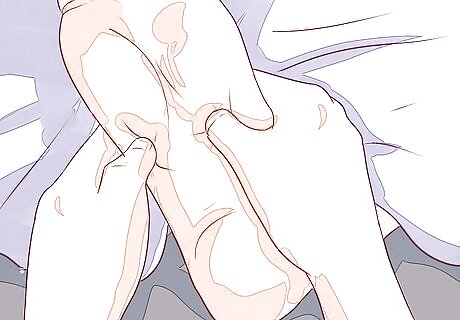
Deal with general aches and pains. An overall reflexology session can relieve general aches and pains. Most reflex points should be pressed for about 10 seconds at a time. Take your time and press all the reflex points on each one of your feet. Use light pressure and pay attention to any spot that feels sore or painful. When you experience discomfort in a reflex point, the corresponding organ or limb is out of balance. Treat all the reflex points on each foot, to evaluate all your areas of imbalance. Once you’ve worked on each of your feet, return to any painful points and work your sore points gently until you no longer feel the soreness or discomfort.



















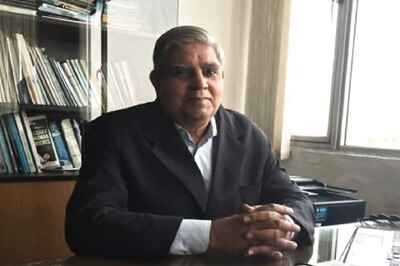
Comments
0 comment